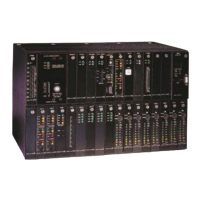D/I Mux III User’s Manual Appendix F. MIB II and DS1 MIB Group Names and Objects
226
Appendix F. MIB II AND DS1 MIB GROUP NAMES AND OBJECTS
Managed objects are accessed via a virtual information store, called the Management Information Base,
or MIB. Objects in the MIB are defined using the subset of Abstract Syntax Notation One (ASN.1) [8]
defined in the Structure of Management Information (SMI). SMI is the set of formatting and rules used to
define, access and augment the Internet MIB. Each object is encoded, and has a name, and a syntax.
The name is an object identifier, an administratively assigned name that specifies an object type. The
object type, together with an object instance, serves to uniquely identify a specific use of the object. For
convenience, a text string called an OBJECT DESCRIPTOR is often used to refer to the object type.
The syntax of an object type defines the abstract data structure corresponding to that object type. The
ASN.1 language is used for this purpose. However, the SMI [12] purposely restricts the ASN.1
constructs that may be used. These restrictions are made for simplicity.
The encoding of an object type is simply how that object type is represented, using the object type's
syntax. The object type's syntax and encoding indicates how the object type is represented when
transmitted on the network. MIBs are assigned Request For Comment (RFC) numbers, and are stored
in a central location, such as the Internet’s venera.isi.edu.
MIB II consists of the following RFC 1213 groups:
• System
• Interfaces
• IP - Internet Protocol
• ICMP - Internet Control Message Protocol
• TCP - Transmission Control Protocol
• UDP - User Datagram Protocol
• EGP - External Gateway Protocol
• Transmission - Transmission Group is a placeholder in the SNMP tree configuration, containing other
groups, including DS1, DS3, Serial, and Ethernet.
• SNMP - Simple Network Management Protocol

